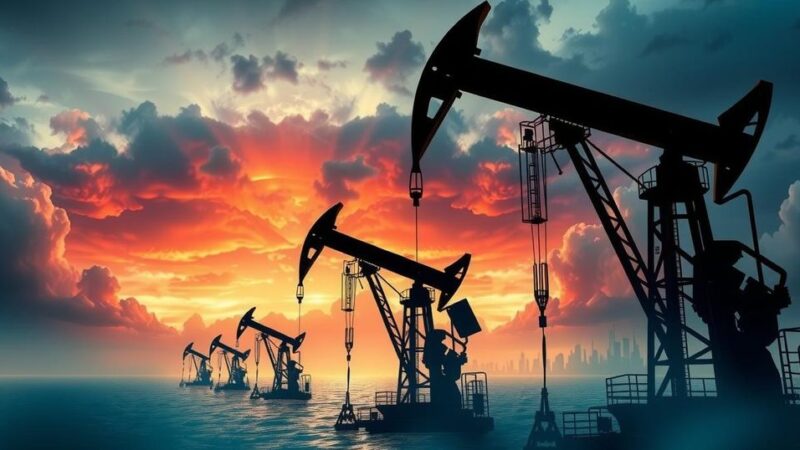Scientists indicate that climate change is rendering the entire United States vulnerable to intense storms and wildfires, as exemplified by the widespread destruction caused by Hurricane Helene. The frequency and economic toll of such disasters are escalating, with vulnerable regions facing compounded risks due to population growth and inadequate infrastructure. Experts call for urgent action to address the mounting challenges posed by climate-induced disasters.
Recent observations by scientists confirm that the entire United States is increasingly vulnerable to severe storms and wildfires exacerbated by climate change. Forecasters had issued warnings ahead of Hurricane Helene, anticipating significant destruction when it struck Florida, yet its aftermath shocked many, with the death toll surpassing 180 and entire communities left without essential services. Notably, Florida’s Big Bend, which had not experienced a hurricane for decades, faced its third such event in a single year. Similarly, the western region of North Carolina, previously seen as a refuge from extreme weather, suffered debilitating floods, catching residents unprepared. Natural disasters across the United States are not only more frequent but also more costly, a trend that scientists attribute to global warming. This phenomenon intensifies atmospheric moisture and energy, resulting in more violent weather patterns. About half of the American population lives in coastal areas, making them more susceptible to hurricane impacts, particularly as infrastructure fails to cope with modern climate realities. Dr. Mari Tye of the National Center for Atmospheric Research emphasized the heightened risk, stating, “Pretty much 50% of the population lives within miles of the sea, more exposed to hurricanes.” Statistical data reveals that North Carolina has shifted from experiencing one or two annual billion-dollar disasters from 1980 to 2009, to an alarming average of six or seven today, coinciding with significant population growth in the state. The aftermath of Hurricane Helene has left many regions isolated due to damaged infrastructure, complicating recovery efforts. Ken Buell, deputy director of the U.S. Energy Department, indicated, “The restoration has been very complex due to the extreme nature of the damage in many areas.” The cumulative impact of disasters has escalated dramatically, particularly as valuable properties are increasingly affected. Chuck Watson, a disaster modeler, noted that a mixture of rising asset costs and population growth makes it easier than ever for disaster impacts to escalate to $1 billion. Predictions suggest that Hurricane Helene may inflict damages in the range of $250 billion, with direct losses estimated at between $30 billion to $35 billion. Texas has consistently led the nation in extreme weather events, logging 186 disasters costing over $1 billion since 1980, significantly more than any other state. Recent months have borne witness to a series of devastating events across Texas, including wildfires and severe storms. The interplay between rising temperatures and climate change is anticipated to drive further risk, with warmer ocean conditions fueling hurricanes and higher sea levels exacerbating storm impacts. Deborah Brosnan, a marine and climate scientist, stated, “Major hurricanes are now more likely because of the extra fuel they can extract from warmer oceans.” With ongoing global warming, both drought-prone regions and areas prone to heavy rainfall face heightened risks, impacting agriculture and energy supply chains while straining emergency response systems. The recent experiences with Hurricane Helene highlight the urgent need for communities to prepare for increasingly violent weather events as climate change continues to reshape the landscape of natural disasters in the United States. In conclusion, Hurricane Helene’s devastation underscores the pressing reality that no region within the United States can consider itself immune to the escalating risks of climate-induced storms and wildfires. As these severe weather events continue to rise in intensity and frequency, the conversation surrounding climate resilience and adaptation becomes paramount.
The article addresses the increasing frequency and intensity of climate-related disasters in the United States, emphasizing that no area is spared from the impacts of climate change, such as hurricanes, floods, fires, and severe weather patterns. It incorporates insights from scientists who highlight the links between rising global temperatures, atmospheric moisture, and the severity of weather events. The historical data regarding disasters and the socio-economic implications of such catastrophes are crucial components, setting the context for understanding contemporary vulnerabilities and the necessity for adequate preparedness and infrastructural resilience.
The pervasive impact of climate change on the frequency and ferocity of natural disasters across the United States is starkly illustrated by the devastation wrought by Hurricane Helene. The rising costs and collective risks necessitate a comprehensive reevaluation of disaster preparedness, urban planning, and climate adaptation strategies. As the implications of climate change continue to manifest in increasingly severe weather events, it is crucial for communities, policymakers, and scientists to engage in proactive measures to mitigate risks and enhance resilience against future disasters.
Original Source: phys.org






